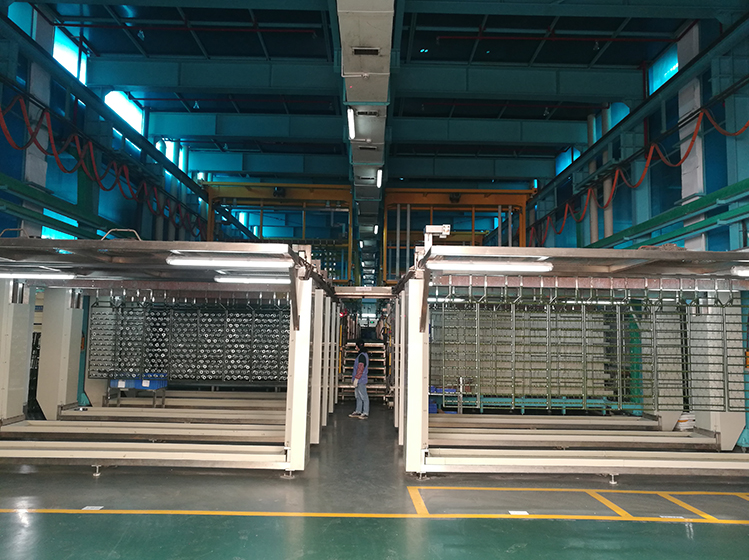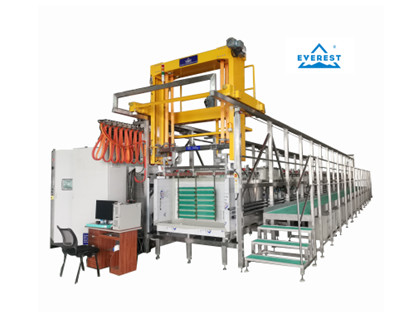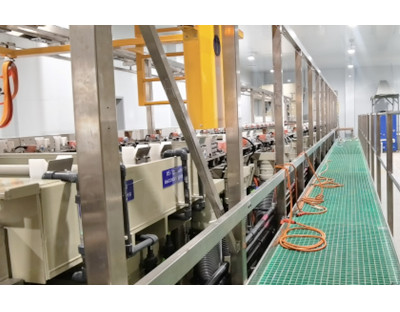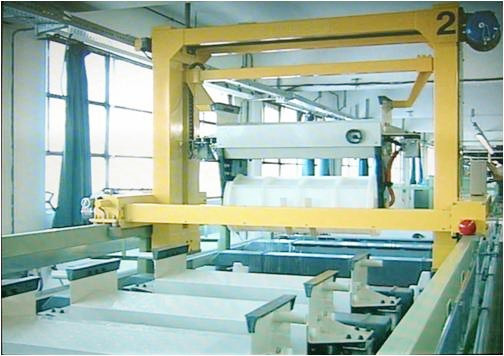Degrease is an essential and important process in the electroplating process. Whether it is cleaning before or after plating, it will affect the quality of metal plating and chemical coating. In the actual production process, people often only pay attention to the change of the composition and parameters of the main electroplating bath, ignoring the cleaning.
In fact, more than 70% of the quality problems are related to cleaning. If the degreasing is not clean, the coating will produce blistering, peeling, blooming and other defects; If it is not washed clean, the coating will form defects such as spots and stains.
Precautions for rinsing
1. Water quality is the premise
The water quality requirements for electroplating cleaning are very strict. The water quality used varies greatly depending on the process, station or plating type. The process water shall generally follow the following principles:
(1) The requirements for water quality of pre-treatment cleaning water are not very high. Generally, tap water (Class C water) can meet the requirements.
(2) It is better to use pure water (Class A water) for the first washing before entering the plating bath, especially for the cleaning before electroless nickel plating.
Because the general tap water contains too much calcium, magnesium or iron ions, once these ions are brought into the plating solution, it is easy to precipitate the plating solution; Or bring in the non-metallic ions to make the electroless nickel coating brittle, foggy, striped and other defects.
(3) From the perspective of cost, it is better to use pure water for the first washing out of the plating tank, so that the first washing water with high concentration can be recycled: when the liquid in the main tank is insufficient, the washing water can be directly added to the main tank, so as to reduce the cost and heavy metal emissions.
(4) The last cleaning water after surface treatment shall meet the cleaning water standard specified in HB 5472 – 1991 “Water Quality Specification for Metal Plating and Chemical Coating Process”.
In this way, the cleaned parts will not leave water marks, spots or impurities that affect the quality of the coating. For the cleaning water and solution preparation water for each plating type, refer to the HB5472 – 1991 standard.
This standard specifies the water quality classification and indicators, water quality analysis methods and process water requirements for metal plating and chemical coating processes.
2. Temperature is the key
The temperature of the cleaning water is also critical. The temperature of cleaning water varies with the process or plating type.
(1) After degreasing with alkaline solution, it must be cleaned with flowing hot water above 60 ° C.
After the parts are degreased in alkaline solution, there will be residual lye and emulsified and saponified oil stains on the surface. These oil stains will condense on the surface of the parts after encountering cold water, making the cleaning incomplete; At the same time, it will cause a great waste of acid in the next process, because in addition to rust removal and activation of the part surface, some of the acid must also neutralize the residual lye on the part surface.
Therefore, the degreased parts should be cleaned with hot water above 60 ° C, only in this way can the lye and dirt remaining on the surface of the parts be completely removed.
(2) For parts plated with alkaline electroplating solution, flowing hot water or hot water immersion shall be used for cleaning after plating.
After cyaniding and galvanizing, the parts shall be immersed in hot water at 40~60 ° C for 20~30 min to completely remove the residual plating solution on the surface of the parts; Otherwise, the passive film generated after passivation will tightly wrap or inclusion these alkaline substances in the passive film, reducing the corrosion resistance of parts.
It should be noted that the hot water used for soaking should be replaced or renewed frequently, otherwise not only the cleaning effect will not be achieved, but also the appearance quality of the coating will be affected.
(3) The plated parts after electroplating should be hot washed before drying.
Increasing the temperature of the plated parts can accelerate the dehydration of the plated parts and effectively prevent the formation of water marks or water spots. For nickel plated parts, it can also effectively prevent the generation of yellow spots (rust spots).
(4) Parts after galvanizing and passivation shall be cleaned with warm water not exceeding 60 ° C.
If the temperature is too high, the newly formed passivation film is easy to break, and the passivation part film is thin and light in color, with poor corrosion resistance; If the temperature is too low, it is not conducive to thoroughly cleaning the parts.
Therefore, the galvanized parts should be ironed with warm water at a suitable temperature, which not only makes the cleaning cleaner, but also seals the holes of the film, greatly improving the corrosion resistance of the film.
(5) Parts with sand holes or small blind holes shall be cleaned by alternating hot and cold water, which is conducive to improving the penetration of water to sand holes, making the solution in these parts fully exchange with the cleaning water, so that all the solutions in the sand holes flow out.
The time and times of alternate cleaning depend on the size of the part, the size and depth of the blind hole (sand hole): the part is large, the blind hole is small and deep, the cleaning time is long and the times are many; On the contrary, the time is short and the frequency is small.
3. Details are the guarantee
In addition to water quality and temperature, details are also important.
(1)The washing shake should not be less
Whether the plated parts are cleaned with a hanger or a basket, the plated parts shall shake up and down, left and right, back and forth (or swing) after entering the water tank to increase the contact between the plated parts and the cleaning water.
In addition, when the plating piece shakes, it will produce relative movement with the cleaning water, and the residual liquid or dirt on the surface of the plating piece will peel off under the mechanical force generated by the relative movement. Dithering can also enhance cloth
Lang motion increases the diffusion speed between the residual liquid on the surface of the plating piece and the cleaning water, so that the cleaning water can completely replace the residual liquid in the shortest possible time, covering the entire surface of the plating piece.
(2)The cleaning hook must be complete
If only the plated parts are cleaned during the cleaning process, the hook part cannot be fully cleaned. When moving to the next process, unloading and drying, the solution or dirt carried on the hanger will fall into the plating bath or the part surface of the next process, causing the plating solution pollution, causing the coating to bloom and appear spots, or the accumulation, blistering and other defects on the upper surface of the part.
In addition, if the hook is not clean, its conductivity with the cathode rod will also be affected. Therefore, parts, hangers and hooks should be cleaned together. If the hangers are too high to be immersed below the liquid level, they can be washed with a tap or washed by hand to avoid the above phenomenon.
(3)Flowing water shall be used for cleaning
When using stagnant water for cleaning, the concentration of cleaning water will become higher and higher. Later, it will not only have no cleaning effect, but will make the plated parts more and more dirty.
Therefore, flowing water should be used for cleaning, so as to ensure that the water in the cleaning tank is always in the updated state. From the perspective of water saving, counter current flowing water can be used for rinsing, but it should be noted that the water flow cannot be short circuited in the cleaning tank.
If water enters from the lower left, it should flow from the upper right. It cannot enter and exit at the top or at one side; Otherwise, the change of water is not sufficient, and the function of flowing water cannot be played. For non flowing water washing (the last pure water washing), it is also necessary to replace or constantly supplement new water to achieve the purpose of washing.
4. The cleaning speed should not be too fast
When the plated parts are lifted out of the plating bath or cleaning bath, stay above the bath for a while (10~30 s). For bowl shaped parts or parts with deep holes and blind grooves, shake and turn over slightly above the plating groove after the groove is out, and pour out the internal liquid as much as possible.
First, minimize the loss of plating solution caused by solution entrainment; Second, the residual solution in the previous process shall be brought into the next process as little as possible, causing pollution to the solution in the next process; Third, reduce the cleaning burden. Thin and light parts shall be slowly put into the plating bath or cleaning bath to prevent parts from floating out of the basket.
5. Do not hang too many plated parts at one time during cleaning
In order to pursue speed, some production workers need to fill as many parts as the basket is large when electroplating small parts. However, this is not reasonable:
Too many parts are hung, the weight increases, the contact opportunities between parts increase, and the fitting is more tight. It is difficult to fully change the contact surfaces between parts by shaking alone, and the contact parts cannot be fully cleaned; Moreover, when electroplating, the number of plated parts is too large, and the coating thickness is uneven, which is easy to produce contact marks. Therefore, it is not advisable to have too many loads at one time. Generally speaking, it is better to lay 2~3 layers at the bottom of the basket for plated parts.
In addition to mastering the above cleaning details, some special cleaning methods should be adopted for special parts:
(1) Injection method.
Use a medical syringe to inject clear water into the blind hole and slit, which can drive out the acid, alkali and dirt hidden inside, so as to achieve the purpose of cleaning.
(3) Neutralization method.
After the plating piece is out of the bath, the plating solution in the sand hole is difficult to be washed away, and the neutralization method can be used to solve this problem. For example, after alkaline tin plating, 4%~6% dilute sulfuric acid can be used for neutralization, and after nickel plating, 3%~5% dilute sodium carbonate solution can be used for neutralization, or anti rust water can be used for immersion treatment.
(4) Ultrasonic method.
Using the mechanical properties of ultrasonic vibration, tens of thousands of small bubbles are generated in the degreasing solution. These small bubbles generate strong mechanical force when forming, growing and closing, so that the adhered grease and dirt can be quickly separated, thus achieving the cleaning effect. This method is suitable for plating parts with complex geometry (such as thread, blind hole, groove, slit) and precision parts with high cleanliness requirements.
Viewpoint
In the electroplating process, different temperatures, water quality and methods should be used for cleaning different processes, different parts and different plating types. In addition, detail management is also very important. Only by grasping the above points, can we guarantee the quality of the coating and serve the production.








 Mar. 08, 2022
Mar. 08, 2022 





